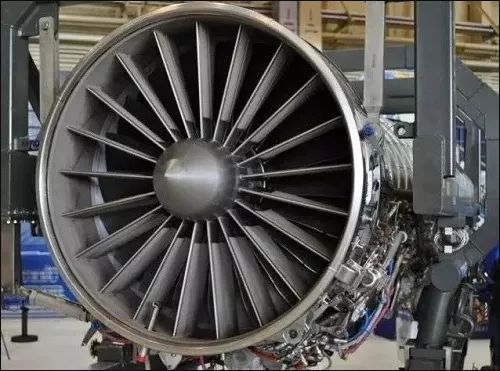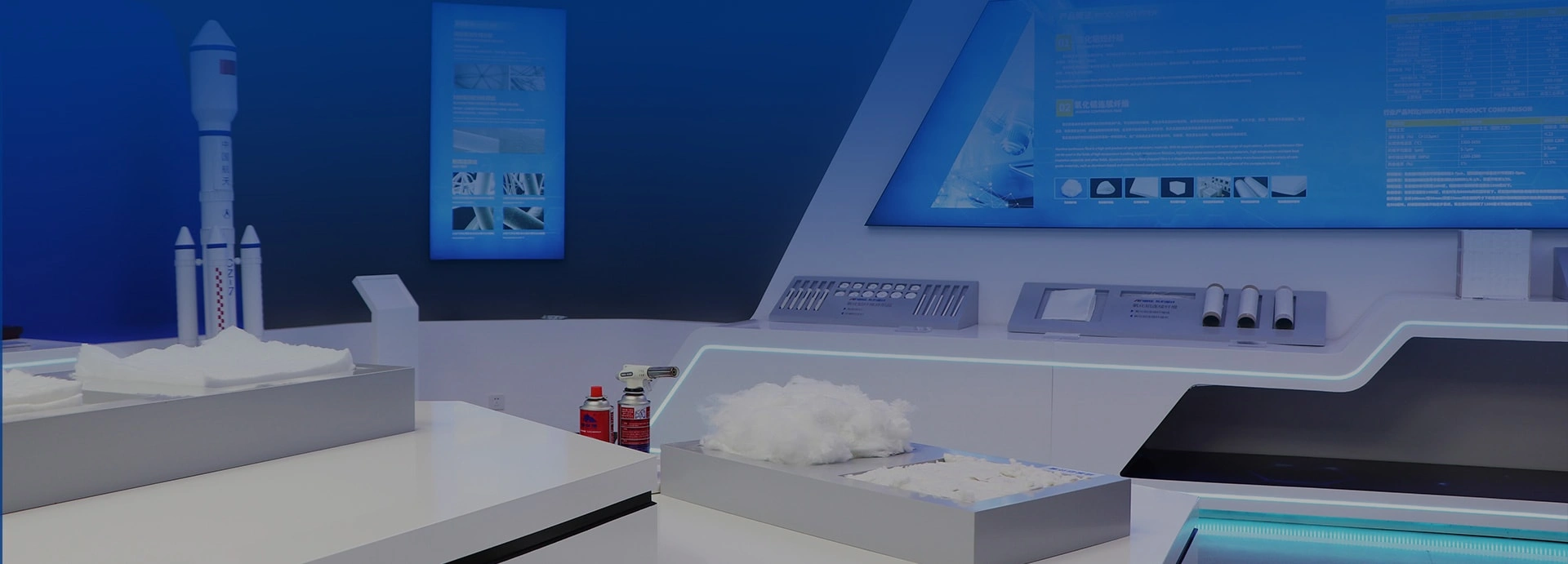[Aluminium oxide fiber manufacturer] What are the key new materials for aviation engines?
![[Aluminium oxide fiber manufacturer] What are the key new materials for aviation engines?](/uploads/image/20241108/24c1156eb4b2a3ea38d9b0d6af15d01c-20241108-9142.webp)
Aerospace manufacturing is the most concentrated area of high technology in manufacturing and belongs to advanced manufacturing technology. The F119 engine developed by the United States Hewlett-Packard Company, the F120 engine of the General Electric Company, the M88-2 engine of the French SNECMA Company, and the EJ200 engine jointly developed by the United Kingdom, Germany, Italy and Spain. These represent the world's advanced level of high-performance aircraft engines, their common feature is the general use of new materials, new processes and new technologies. Today we will look at those high-performance aviation engine on the new materials.
01 high-temperature alloys
High-temperature alloys are developed to meet the harsh requirements of the jet engine materials, has become an irreplaceable class of key materials for military and civilian gas turbine engine hot end components. At present, in the advanced aero-engine, high-temperature alloys account for more than 50%.
The development of high-temperature alloys is closely related to the technological progress of aviation engines, especially the engine hot-end components of turbine discs, turbine blade materials and manufacturing process is an important symbol of engine development. Due to the high temperature resistance of the material performance and stress tolerance put forward high requirements, the early British developed Ni3 (Al, Ti) reinforced Nimonic80 alloy, used as a turbojet engine turbine blade materials, at the same time, and the successive development of the Nimonic series of alloys. The United States developed a diffusion-enhanced nickel-based alloys containing aluminium and titanium, such as Pratt & Whitney, GE and Special Metals developed Inconel, Mar-M and Udmit alloy series.
In the development of high-temperature alloys, the manufacturing process plays a great role in promoting the development of alloys. Due to the emergence of vacuum melting technology, the removal of harmful impurities and gases in the alloy, especially the precise control of the alloy composition, so that the performance of high-temperature alloys continue to improve. Subsequently, directional solidification, single crystal growth, powder metallurgy, mechanical alloying, ceramic cores, ceramic filtration, isothermal forging and other new processes have been successfully researched, promoting the rapid development of high temperature alloys. Among them, directional solidification technology is the most prominent, using directional solidification process to produce directional, single-crystal alloys, the use of its temperature is close to 90% of the initial melting point. Therefore, the current countries advanced aviation engine blades are used in directional, single crystal alloy manufacturing turbine blades. From an international perspective, nickel-based casting high temperature alloys have formed isometric crystal, directional solidification column crystal and single crystal alloy system. Powdered high temperature alloys have also been developed from the first generation of 650 ℃ to 750 ℃, 850 ℃ powder turbine discs and dual-performance powder discs for advanced high-performance engines.
China's high-temperature alloys with the development of aviation engine development and production needs and development. China's high-temperature alloy business and started in the 1970s before the first and second generation of China's engine needs, China's research and development of the GH series of deformation of high-temperature alloys as well as the K series of casting high-temperature alloys, while the development of a number of new manufacturing technologies, such as vacuum melting and casting, hollow blade casting, isothermal forging and so on.
After the 70s, in the development of high-temperature alloys, China introduced the European and American technology, according to foreign technical standards for the development and production, the purity of the material and the overall performance of the higher requirements, the development of high-performance deformation of high-temperature alloys, casting high-temperature alloys. Especially the research and development of DZ series of directional solidification column crystal alloys and DD series of single crystal alloys, make China's high-temperature alloys in the production process technology and product quality control on a new level.
02 Ceramic Matrix Composites
When it comes to ceramics, it is natural to think of it is characterised by brittleness. More than ten years ago, if it is used in the field of engineering bearing parts, is impossible for anyone to accept, until now when it comes to ceramic composites, there may still be some people are not clear that ceramic and metal is originally two kinds of unrelated to the basic materials, but since people cleverly combine ceramics and metal, only to make the concept of this material has undergone a fundamental change, which is the ceramic matrix composite materials.
Ceramic matrix composites in the field of aviation industry is a very promising new structural materials, especially in the application of aviation engine manufacturing, more and more show its unique characteristics. In addition to the advantages of light weight and high hardness, ceramic matrix composites also have excellent high temperature resistance and high temperature corrosion resistance. At present, ceramic matrix composites in withstand high temperatures has exceeded the metal heat-resistant materials, and has very good mechanical properties and chemical stability, is a high-performance turbine engine high-temperature region ideal for excellent materials.
At present, the world's countries for the next generation of advanced engines on the material requirements, is focusing on the study of silicon nitride and silicon carbide reinforced ceramic materials, and has made greater progress, some have begun to be applied in modern aviation engines. For example, the U.S. verification of the F120 engine, its high-pressure turbine sealing device, part of the combustion chamber of high-temperature parts, are used in ceramic materials. France's M88-2 engine combustion chamber and nozzle, etc. are also used in ceramic matrix composite materials.
03 Intermetallic compounds
High-performance, high thrust-to-weight ratio of the development of aircraft engines, promoting the development and application of intermetallic compounds. Nowadays, intermetallic compounds have been developed into a variety of families, which are generally compounds composed of binary ternary or multi-element metal elements. Intermetallic compounds have great potential for high-temperature structural applications, with high service temperatures as well as high specific strength, thermal conductivity, and especially at high temperatures, but also excellent oxidation resistance, high corrosion and high creep strength. In addition, since intermetallic compounds are a new material between high temperature alloys and ceramic materials, it fills the gap between these two materials, thus becoming one of the ideal materials for high temperature components of aero-engine.
At present, in the structure of aero-engine, the research and development is mainly focused on intermetallic compounds such as titanium aluminium and nickel aluminium. These TiAl compounds have basically the same density as titanium, but have a higher operating temperature. For example, the service temperatures of TiAl and TiB are 816°C and 982°C, respectively. Intermetallic compounds have a strong inter-atomic bond and a complex crystal structure, which causes it to be difficult to deform, showing hard and brittle characteristics at room temperature. At present, after years of experimental research, a new type of alloy with high-temperature strength and room-temperature plasticity and toughness has been successfully developed and has been installed and used with good results. For example, the United States of America's high-performance F119-type engine connotation magazine, turbine discs are used in intermetallic compounds, the validator F120-type engine compressor blades and discs are used in the new titanium-aluminium intermetallic compounds.
04 Ultra High Strength Steel
Ultra-high strength steel is used as landing gear material in aircraft. The second generation of aircraft using landing gear material is 30CrMnSiNi2A steel, tensile strength of 1700MPa, this landing gear life is shorter, about 2000 flight hours.
The third generation of fighter aircraft design to landing gear life of more than 5000 flight hours, at the same time, due to the increase in airborne equipment, the aircraft structure weight coefficient decreases, the landing gear material selection and manufacturing technology to put forward higher requirements. The United States and China's third-generation fighter aircraft are used 300M steel (tensile strength of 1950MPa) landing gear manufacturing technology.

It should be noted that the improvement of the level of material application technology is also promoting the further extension of the life of the landing gear and adaptability of the expansion. Such as the Airbus A380 aircraft landing gear using a super-large integral forging technology, new atmosphere protection heat treatment technology and high-speed flame spraying technology, so that the landing gear life to meet the design requirements. Thus, the progress of new materials and manufacturing technology ensures the renewal of the aircraft.
Aircraft in the corrosion-resistant environment of the long life design of the material puts forward higher requirements, AerMet100 steel compared to 300M steel, the strength level is comparable, and resistance to general corrosion and stress corrosion resistance is significantly better than the 300M steel, with the matching landing gear manufacturing technology has been applied to the F / A-18E / F, F-22, F-35 and other advanced aircraft. Higher strength Aermet 310 steel fracture toughness is lower, is under study. Damage tolerance ultra-high-strength steel AF1410 crack expansion rate is very slow, used as a B-1 aircraft wing actuator joints, than Ti-6Al-4V weight loss of 10.6%, processing performance increased by 60%, cost reduction of 30.3%. Russian MIG-1.42 on the high strength stainless steel dosage of up to 30%. PH13-8Mo is the only high-strength martensitic precipitation hardening stainless steel, widely used as corrosion-resistant components. Domestic exploration of ultra-high strength stainless steel to achieve initial results.
Foreign countries have also developed ultra-high strength gear (bearing) steel, such as CSS-42L, GearmetC69, etc., and in the engine, helicopter and aerospace trial. Domestic engine, helicopter transmission material technology is very backward, Beijing Institute of Aeronautical Materials has independent research and development of an ultra-high strength bearing gear steel.
05Carbon/Carbon composites
C / C matrix composites is one of the most important attention in recent years, a more high-temperature resistant new materials. So far, only C / C composites are considered the only can be done for the thrust ratio of more than 20, the engine inlet temperature up to 1930-2227 ℃ turbine rotor blade successor material, is the United States in the 21st century to focus on the development of high-temperature materials, the world's advanced industrial countries strive to pursue the highest goal. C / C-based composites, that is, the carbon fibre-reinforced carbon composites, which is the carbon's refractory and high strength and rigidity of carbon fibres. Carbon fibre's high strength and high rigidity combined in one, so that it shows non-brittle damage. Due to its light weight, high strength, superior thermal stability and excellent thermal conductivity, it is the most ideal high-temperature-resistant material today, especially in the high-temperature environment of 1000-1300 ℃, its strength not only did not decline, but also improved. It still maintains the strength and demeanour of room temperature environment when it is below 1650℃. Therefore, C/C matrix composites have a great future in the aerospace manufacturing industry.
C / C matrix composites in the application of aviation engines is the main problem of poor antioxidant performance, in recent years the United States by taking a series of process measures, so that this problem is constantly being solved, and gradually applied to new engines. For example, the U.S. F119 engine on the nozzle of the tail nozzle of the combustion chamber, F100 engine nozzles and combustion chambers

